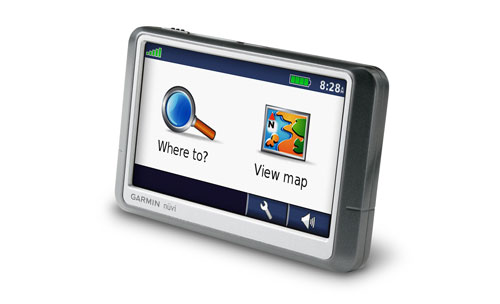
Are the days of GPS-powered personal navigation devices (PNDs) numbered? With Google Maps Navigation now offering SA Android smartphone users free turn-by-turn navigation and Nokia’s Ovi Maps offering live traffic information, it’s hard to see how standalone PNDs can survive.
This is particularly true as big-name PND manufacturers are now offering applications for the very devices that threaten their core business.
But Joost Jetten, TomTom’s vice president for consumer products in Benelux and Southern Africa, sees it differently. He says PNDs offer a different experience to a cellphone and many consumers opting for both, with a cellular application considered as a “back-up”.
“PNDs differ in user friendliness and things like safety because they are tailored for this purpose,” says Jetten. “We think many people still want a dedicated navigation device.”
He says TomTom will continue working on ways to optimise its PNDs and that since it introduced traffic information on devices in SA, uptake has “been one of the best in the whole world relative to market size”.
Jetten says 75% of TomTom’s turnover comes from PNDs and that the rest comes from other services and licensing. The company licenses its software to handset manufacturers HTC and Samsung, car manufacturer Renault and sells an iOS application that Jetten says is recording “110 000 downloads per quarter”.

He says the decision to release applications, like the TomTom iPad app, announced last week at an event in Berlin, Germany, was “driven by consumer demand”, and that he doesn’t expect it to affect sales of PNDs too severely. “There’s a demand for multiple platforms and consumers appreciate having a familiar interface across devices.”
Jetten says TomTom is looking to develop apps for Android and BlackBerry devices eventually, too. He expects sales of PNDs to decline, particularly in the current economic climate, but still anticipates high demand from existing customers wanting to upgrade their devices.
Chris Crozier, chief technology officer for Garmin Distribution Africa — which is in the process of being acquired by Garmin — say the navigation giant also offers an iOS application and “has recently acquired Navigon, which has applications for iOS, Windows Mobile 7 and Android”.
In a recent interview with Reuters, Garmin’s chief operations officer, Cliff Pemble, said the company expects the market for PNDs to continue to fall, before stabilising at around 20m units per year. He admitted he can’t say whether the PND market would ever grow again.
As to why people still buy PNDs when they have navigation on their mobile devices, Crozier says he thinks the explanation is “analogous to why people still buy cameras: a PND generally does the job better”.
“A mobile phone solution is typically inferior to a PND in one or more of the following: screen size, screen resolution and battery life,” he says. “It’s also not suited to multitasking, so you can’t navigate and use the phone at the same time. The availability of more dedicated battery power in a PND also allows developers to pack in more functionality.”
Whether larger screens and better battery life will be enough to keep the PND from becoming redundant remains to be seen, particularly as smartphones become more ubiquitous and younger generations see them, rather than PNDs, as the standard device for navigation.
Arguably the only thing that genuinely separates PNDs from phone applications is the additional services they offer, but as Nokia demonstrated recently with its updated Ovi Maps that includes traffic information, even these differentiating features are disappearing fast.
The future of companies like TomTom and Garmin may lie primarily in licensing their software for other devices and platforms, and to vehicle manufacturers, fleet management services and the like. — Craig Wilson, TechCentral
- Subscribe to our free daily newsletter
- Follow us on Twitter or on Facebook




